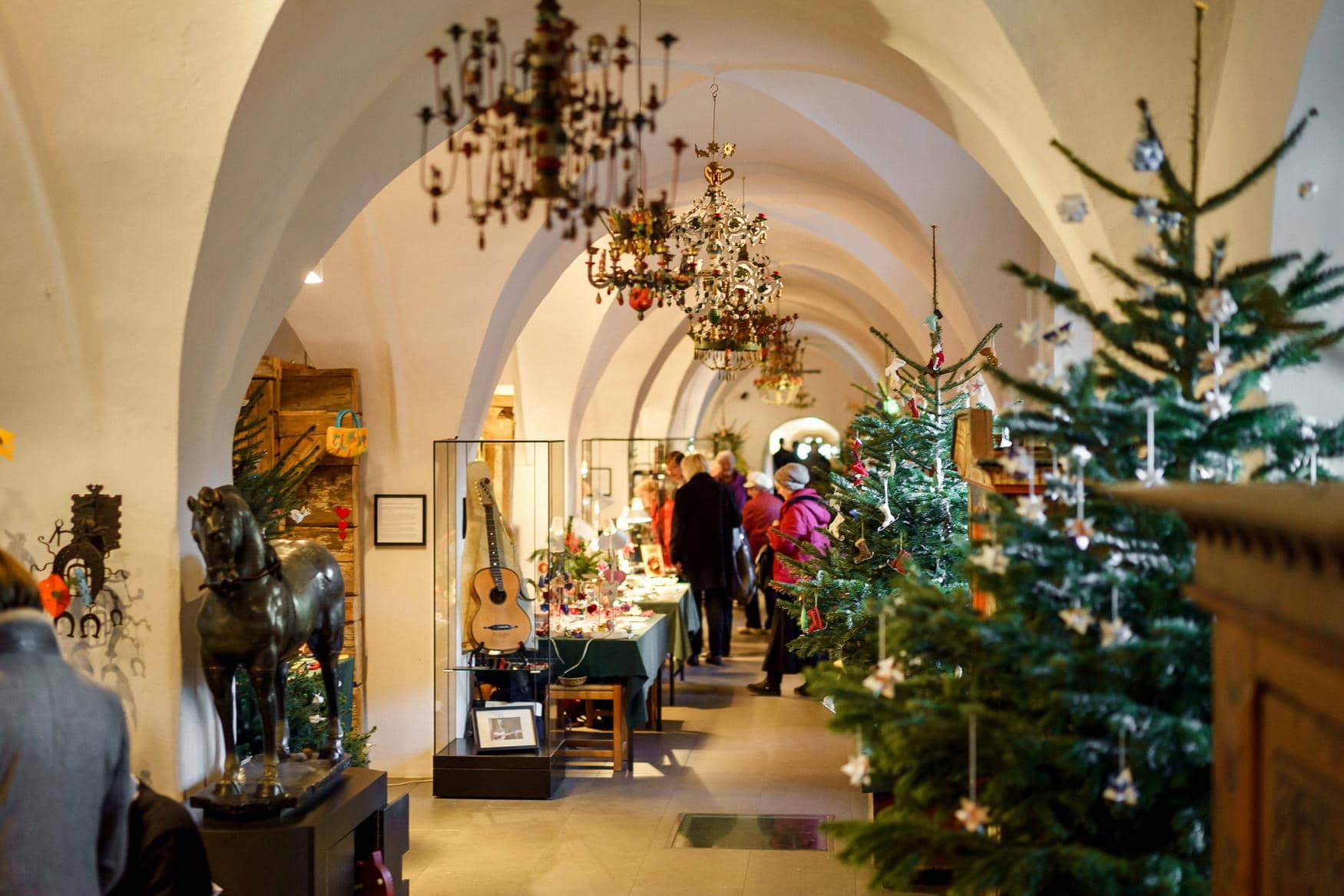Dresden, a city steeped in history and culture, offers an exceptional experience for families interested in exploring the rich tapestry of Saxon heritage. Among its many cultural treasures lies the Museum of Saxon Folk Art, an institution dedicated to preserving the Saxony region's traditional crafts, costumes, and daily life. With exhibits that charm both young and old alike, this museum is an engaging stop for families delving into the artistry of times past.
Inside, the museum boasts one of the largest and most significant collections of puppet theatre artifacts, presenting an interactive and vivid storytelling medium that has captivated audiences for centuries. Children's imaginations light up as they encounter the colorful and intricate puppets, while parents appreciate the craft and historical insight that these exhibits provide. From storied marionettes to dramatic tableaus, the puppet theatre collection is a highlight that adds a playful dimension to the visit.
Contents
 Photo: volkskunst.skd.museum
Photo: volkskunst.skd.museum
The Museum of Saxon Folk Art not only showcases the region's artistic traditions but also provides a deeper understanding of the communal and everyday life of the Saxon people. As visitors wander through well-curated rooms, they come face-to-face with the legacy of Saxon handicrafts and the timeless beauty these skills have left for the world to admire. This museum experience is not one to be missed for those looking to immerse themselves in authentic Saxon culture with the entire family.
Here is Why Your Kids Will Find it Interesting
This spot offers families a unique, educational, and entertaining experience. It is an institution where children can immerse themselves in a creative environment and discover cultural artifacts in a way that appeals to their sense of wonder.
Here are three main reasons why this museum is a must-visit for families:
- Interactive Exhibit Exploration. The museum's displays are not just artifacts to observe; they are stories to be part of. With an array of traditional toys, costumes, and hand-crafted objects, children can engage with Saxon history through touch and play. Especially suitable for children aged 5 to 12, hands-on exhibits allow them to connect with history tactilely.
- Imagination Ignited by Puppetry. Young visitors are captivated by the intricate puppet theater collection. Here, they can see storytelling in action and appreciate the artistry in every figure. Puppets often bring characters from local folklore to life, offering a lively and whimsical exploration of Saxon myths and legends.
- Cultural Enrichment with Fun. The Museum of Saxon Folk Art with Puppet Theater Collection is worth visiting with kids because it stimulates their cultural curiosity while keeping them entertained. It illuminates the colorful and festive side of Saxony's heritage with engaging folklore presentations and cheerful exhibitions.
Children will leave with a sense of connection to history and an ignited imagination, making this a memorable part of any family trip to Dresden.
History of the Museum
 Photo: volkskunst.skd.museum
Photo: volkskunst.skd.museum
The Museum of Saxon Folk Art with Puppet Theater Collection is a cultural treasure that offers families a journey through Saxon history and creativity. The evolution of its collections has made the museum a significant repository of folk art and theatrical artifacts.
This exhibition found its residence in the quaint and historical Jägerhof, a building steeped in history dating back over 400 years. The Jägerhof, with its charming Renaissance architecture, provided the perfect backdrop for showcasing Saxon folk traditions and artistic expressions. The museum's inception can be linked to the meticulous efforts of Oskar Seyffert, a German painter and folklorist who dedicated his life to preserving the cultural heritage of Saxony. The museum officially opened its doors to the public, offering a window into the region's artistic past.
Since its establishment, the museum has seen a remarkable expansion of its collections. Initially focusing on traditional Saxon folk art, including costumes, textiles, and hand-crafted objects, the museum later introduced one of the world's most extensive puppet theater collections. This section, which arose from Otto Link's private compilation of puppets, enhances the museum's appeal, especially to visiting families. It has become a corner to explore puppetry art's fascinating and whimsical world, complementing the folk art exhibits and enriching the cultural experience for visitors of all ages.
Just 1 km away from this museum are several other key sightseeing spots that are definitely worth visiting with children: the Armoury, Dresden Castle and the Green Vault.
Exhibitions and Collections
The Museum offers a remarkable experience, showcasing the richness of Saxon culture through vibrant folk art and an extensive puppet theater collection. Visitors of all ages can explore various artifacts, from hand-carved wooden figurines to intricate lace and historical toys, all of Saxony's deep-rooted traditions.
Permanent Exhibitions
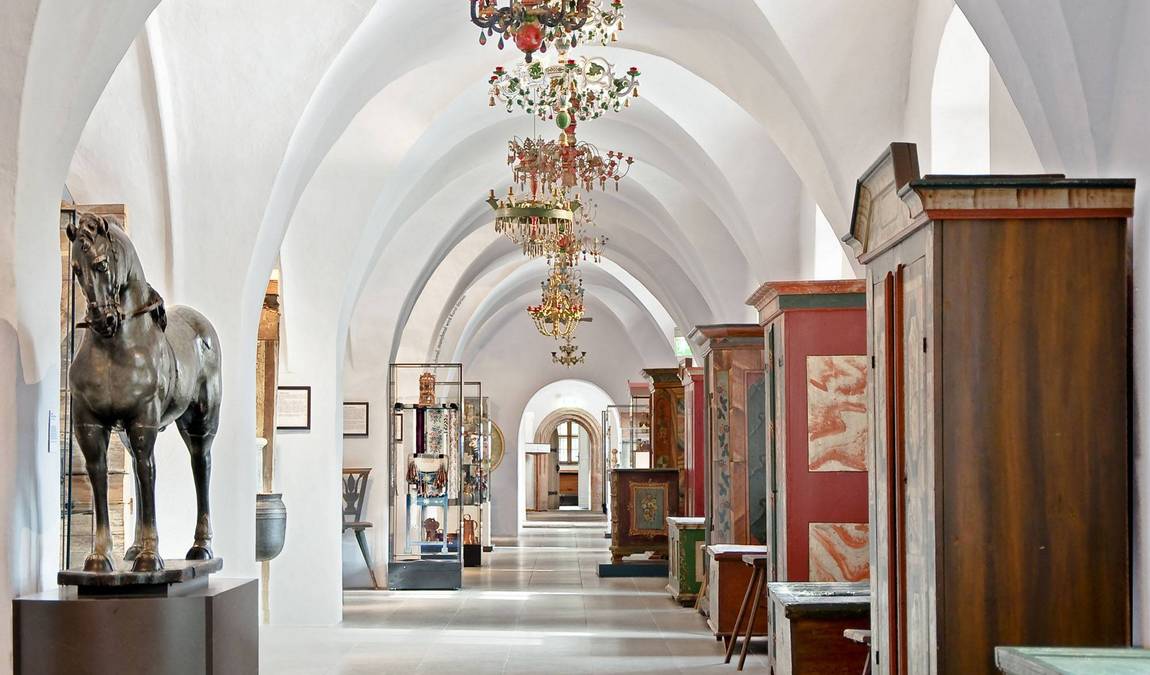 Photo: volkskunst.skd.museum
Photo: volkskunst.skd.museum
The museum's permanent collections illuminate the region's artistic expressions. Here, one can find a vast array of Saxon folk art, including, but not limited to, painted furniture, ceramics, and textiles. The exhibits mainly highlight the craftsmanship of the Erzgebirge and Vogtland areas, which are famous for their woodworking and lace-making. The Ore Mountain tradition of creating sophisticated wooden toys and miniatures is also a central feature.
The Puppet Theater Collection is a standout attraction, containing thousands of puppets ranging from historical pieces to contemporary performances. Every artifact tells its story, offering insight into the region's cultural fabric.
Seasonal and Special Exhibitions
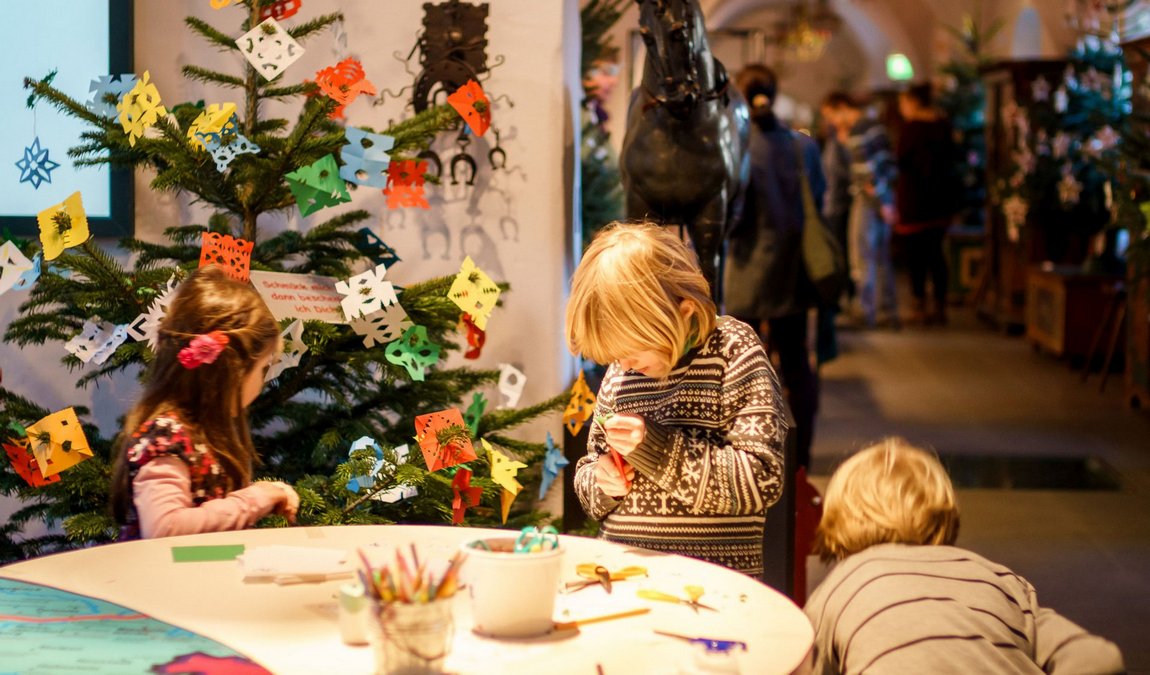 Photo: volkskunst.skd.museum
Photo: volkskunst.skd.museum
Seasonally, the museum transforms to showcase special exhibitions, adding a dynamic layer to its cultural offerings. These exhibitions often revolve around specific aspects of Saxon folk art, such as distinct lace patterns, festive costumes, or uniquely painted furniture. They provide an in-depth look at how Saxony's traditions have evolved and continue to influence art and culture today. Visitors can engage with the ever-changing displays, each curated to enhance understanding and appreciation of Saxon heritage.
For families with a curiosity for culture and a yearning for yesteryear's playthings, visiting the special exhibits, often displaying whimsical historical toys and seasonal Erzgebirge carvings, promises a delightful excursion.
Puppet Theater Collection
 Photo: volkskunst.skd.museum
Photo: volkskunst.skd.museum
The Puppet Theater Collection at the Museum of Saxon Folk Art is a magical showcase of puppetry spanning history and styles, offering families an enchanting glimpse into this traditional art form.
Marionettes and Hand Puppets
As one wanders through the Museum of Saxon Folk Art's Puppet Theater Collection, the diversity of the marionettes and hand puppets impresses. Visitors of all ages are drawn to the intricate designs and the varied materials used to create these characters, which range from classic fairy-tale figures to contemporary personas.
- Materials: Wood, cloth, and more
- Types: Historical and modern styles
- Attraction: Attention to detail
Puppet Theatre Performances History
Delving into the history of puppet theater performances becomes a journey through time in this collection. It showcases the integral role that puppetry has played in entertainment and education through the centuries. One can trace how these performances have evolved from street theatres in the medieval ages to sophisticated stage productions.
- Timeline: Medieval period to present
- Cultural Insight: Reflects sociopolitical changes
- Influence: Education and storytelling
Visitors leave the collection not only with a deeper appreciation for the art of puppetry but also with shared memories that are sure to last.
Cultural Significance
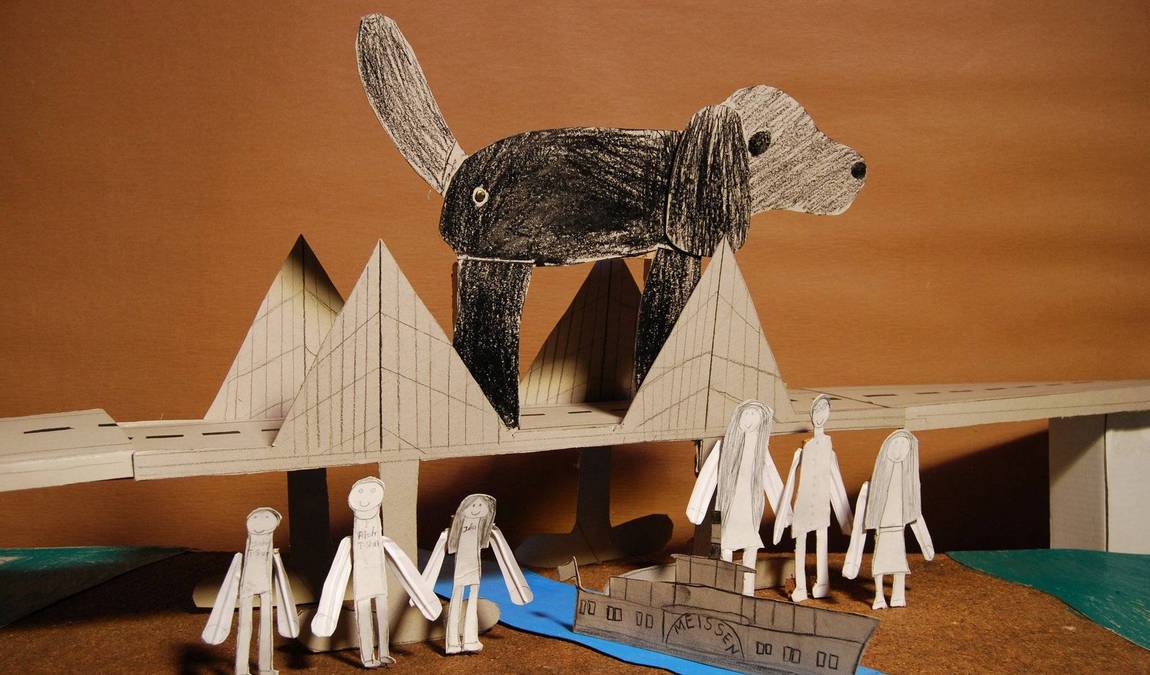 Photo: volkskunst.skd.museum
Photo: volkskunst.skd.museum
When visitors enter the Museum of Saxon Folk Art, they immerse themselves in a realm that celebrates Saxony's rich cultural tapestry and its enduring impact on local and global culture.
Saxon Folk Art and Traditions
Saxony's cultural landscape is vibrantly depicted through its folk art. The Museum showcases exquisite carved objects from the Ore Mountains, intricately printed and embroidered textiles from the Lausitz region, and the splendid Sorbian national costumes, which are a feast for the eyes. These pieces reflect artistic expression and weave stories of the region's history and the everyday lives of its people.
Influence on Local and Global Culture
The Museum of Saxon Folk Art with Puppet Theater Collection sheds light on a peculiar aspect of cultural heritage: the puppet theatre. With a collective spanning over 200-year-old marionettes to modern puppetry, this exhibition captures the hearts of families, enchanting both children and adults. The museum's treasures include historical theatre sets that have influenced theatrical expressions well beyond Saxony's borders, demonstrating how local traditions can resonate globally.
Visitor Information
 Photo: volkskunst.skd.museum
Photo: volkskunst.skd.museum
When planning to visit the Museum of Saxon Folk Art with Puppet Theater Collection, guests should note that the venue promises an enriching experience rich in culture and entertainment, suitable for all ages. This section provides vital information to ensure a pleasant and hassle-free visit for families looking to enjoy a day steeped in the artistic traditions of Saxony.
Guided Tours and Accessibility
The Museum of Saxon Folk Art offers guided tours illuminating the collection's fascinating history, making it a delightful educational experience for children and adults alike. Handicapped-accessible facilities ensure that every guest can enjoy the museum to the fullest regardless of mobility. Tours can be tailored to visitors' needs upon request, and scheduled lectures provide deeper insight into specific exhibits and themes.
Services and Amenities
Visitors will find the museum well-equipped with amenities to provide comfort and convenience. Restrooms and seating areas are available throughout, and the staff is noted in reviews for being friendly and helpful. The museum's commitment to family-friendliness is underscored by its various interactive exhibits, which capture the imaginations of both the young and the young at heart.
Visiting here isn't just a walk through history but an engaging journey into the magical world of puppetry and folk art. The Museum of Saxon Folk Art with Puppet Theater Collection awaits those eager to enter a realm where artistry and storytelling from a bygone era come to life.
Best Time to Visit
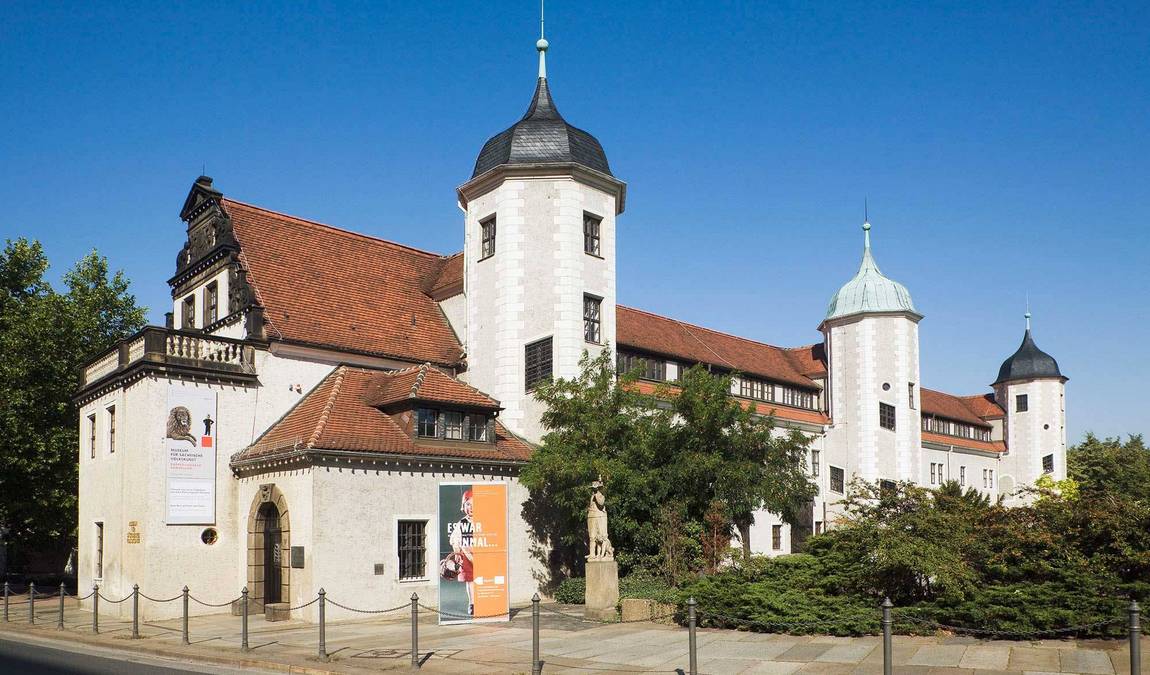 Photo: volkskunst.skd.museum
Photo: volkskunst.skd.museum
Timing is critical when planning a visit to the museum, as it captivates both the young and the young at heart. Families with children will find that Tuesday through Sunday are the ideal days to visit, as the museum is closed on Mondays.
Aim for a smooth, crowd-free experience for late morning arrivals around 10 am when the doors open. It offers tranquility that is perfect for families to spend quality time within the exhibits without the hustle of the afternoon crowd. It's also a golden hour for youngsters, as they are typically at their most alert and eager to learn.
Weekends can be busier, so visiting on a weekday ensures a more personal encounter with the arts and puppetry. If weekdays aren't an option, consider a Sunday afternoon, when most visitors have headed home and leave a quieter space for exploration.
The museum's setting within the historical Jägerhof, alongside its captivating Saxon folk art and one of the world's most extensive puppet theater collections, provides a perfect backdrop for sparking creativity and imagination in children.
To ensure a well-rounded visit, check for any special exhibitions or family programs that may vary throughout the year. These can provide unique, interactive, delightful elements for the kids. Remember, the last admission is generally an hour before closing, so plan accordingly for a leisurely experience.
How Long Does It Take to Attend?
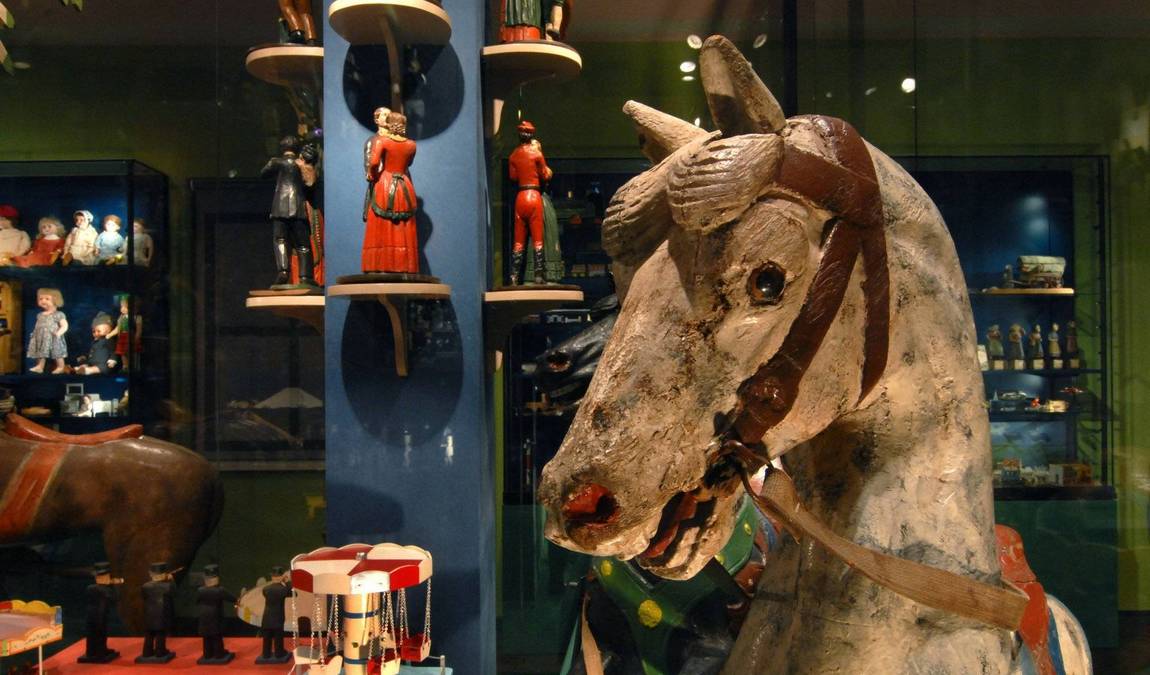 Photo: volkskunst.skd.museum
Photo: volkskunst.skd.museum
When planning a visit to the Museum of Saxon Folk Art and Puppet Theatre Collection in Dresden, visitors often wonder how much time they should allocate for the experience.
Typical Visit Duration:
- Quick Overview: A swift walkthrough could take approximately 1 hour for those on a tight schedule.
- Thorough Exploration: Families diving deep into the museum's offerings, including the puppet theatre collection, might spend 2-3 hours engaging with the exhibits.
Factors to Consider:
- Age and Interest: Children's engagement levels vary, so families should gauge the time based on their children's interests in crafts, costumes, and puppetry.
- Event Participation: Interactive events, such as carving or spinning courses, occur on specific days and can extend the visit by 1-2 hours.
- Individual Pace: Some may prefer a more leisurely pace to appreciate the handcrafted artifacts and cultural insights.
Suggested Itinerary:
- 10:00 am: Arrive early to enjoy a more tranquil atmosphere.
- 10:15 – 12:15 pm: Explore the main exhibits, including traditional costumes and puppet displays.
- 12:15 – 1:00 pm: Participate in available interactive sessions or enjoy a leisurely lunch nearby.
Is the Museum of Saxon Folk Art with Puppet Theater Collection Worth Visiting?
Housed in the picturesque 400-year-old Jägerhof building, this museum offers an immersive journey through Saxony's cultural artifacts and one of the world's largest puppet theatre collections.
Exhibits:
- Traditional costumes and textiles
- Hand-crafted objects
- An extensive collection of puppets
Activities:
- Interactive tours
- Live puppet shows (check schedule)
It presents a blend of educational experiences for families with hands-on activities that entertain and inform. Children can marvel at the detailed craftsmanship of the puppets, which offers a visual feast well-suited for their curious minds.
Reasons to Visit the Museum of Saxon Folk Art with Puppet Theater Collection:
- Engaging visual and hands-on exhibits
- Family-friendly interactive tours
- Live puppet shows provide educational entertainment
The museum's layout facilitates exploration, allowing adults and children alike to appreciate the depth of Saxon history and the evolution of folk art.
Accessibility:
- Stroller-friendly
- Activity sheets for children
The Museum of Saxon Folk Art with Puppet Theater Collection is worth visiting for its interactive displays, captivating puppetry, and the formidable ambiance of the Jägerhof. It is a cultural haven that offers a peek into Saxony's traditional and lively folk arts.
Conclusion
For families exploring Dresden's rich cultural landscape, the Museum of Saxon Folk Art with Puppet Theater Collection stands out as a must-see destination. It is an enchanting space that caters to children's curiosity and imagination with its colorful and intricate displays. The museum engages young minds with interactive exhibits and provides an authentic taste of Saxon traditions through enthralling puppet shows.
The Museum of Saxon Folk Art with Puppet Theater Collection is worth visiting for its connection to history through playful engagement, the storytelling prowess of its exhibits, and its family-centric approach to art and culture. Encouraging families to step into stories told through puppetry, this museum is a haven where joy and learning go hand in hand. When planning your family's journey through Saxony, be sure to include a visit to this museum for an unforgettable experience.




